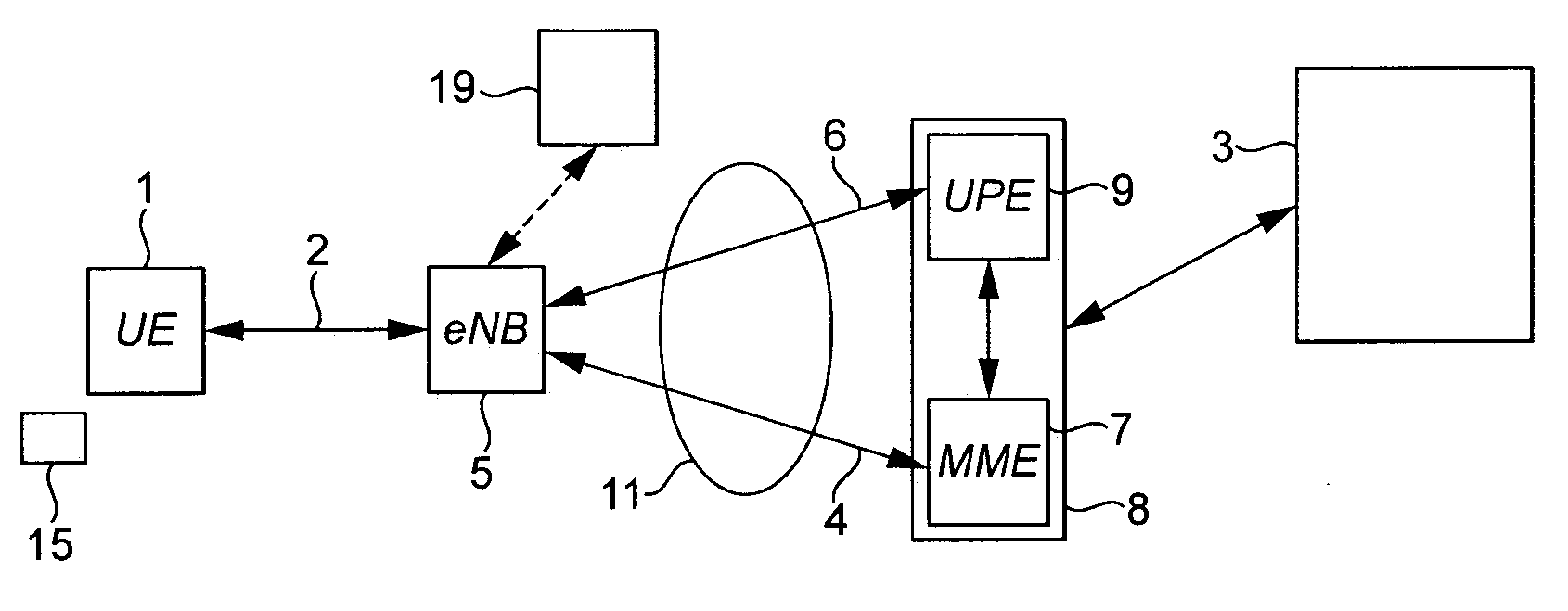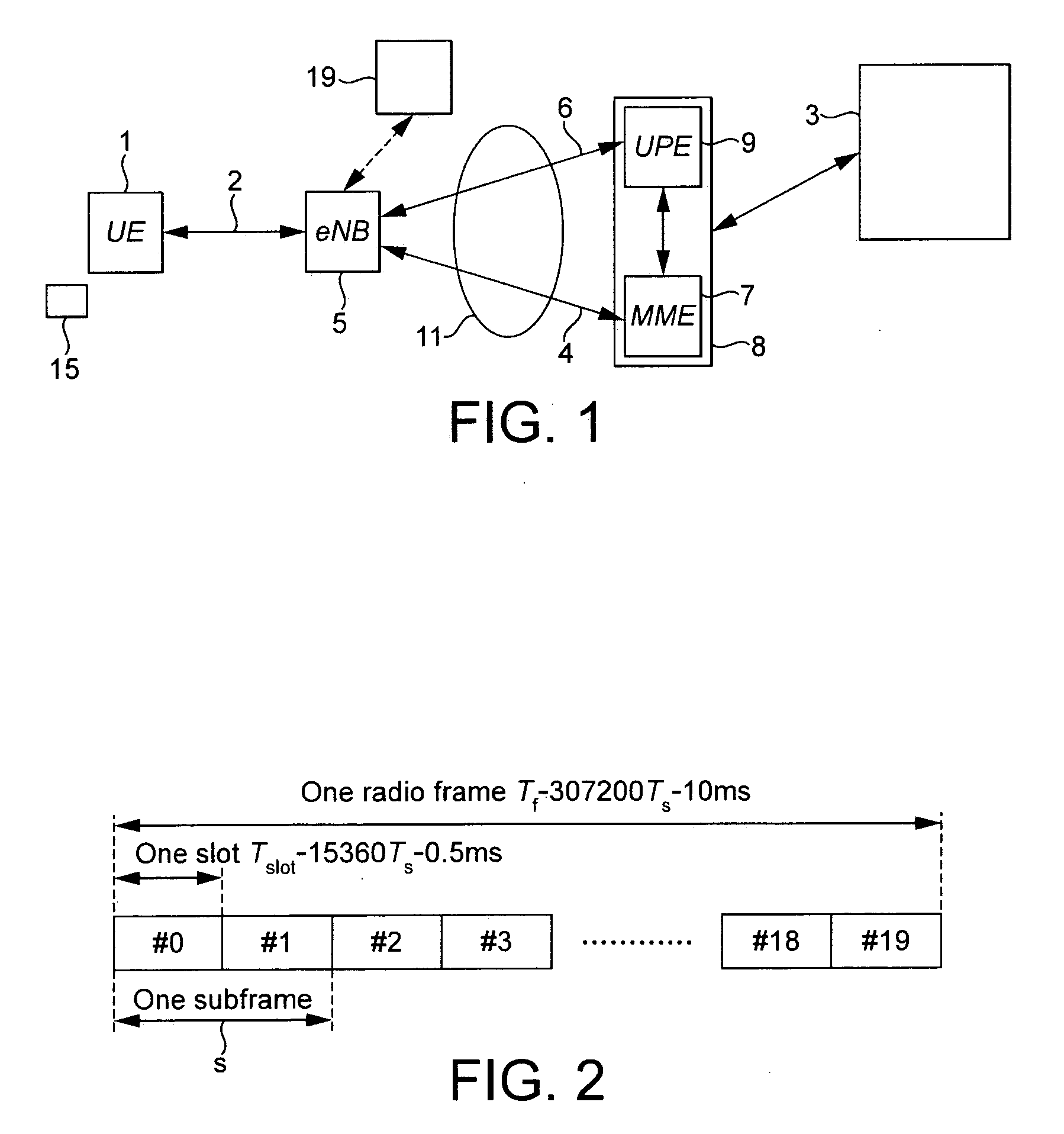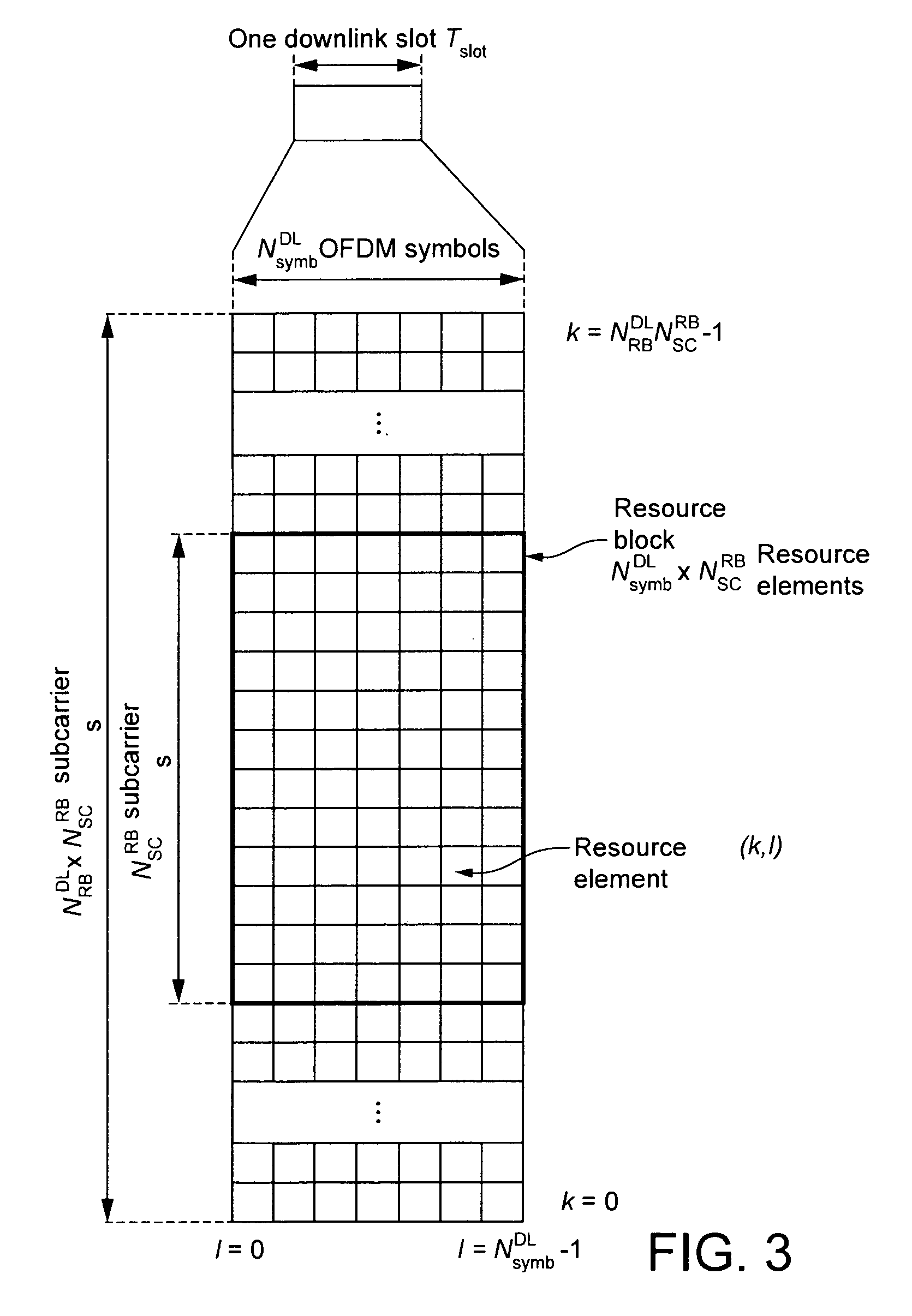Telecommunications systems
- Summary
- Abstract
- Description
- Claims
- Application Information
AI Technical Summary
Benefits of technology
Problems solved by technology
Method used
Image
Examples
Embodiment Construction
[0028]FIG. 1 shows schematically the logical elements of a SAE / LTE (“4G”) cellular telecommunications network. Mobile terminal (UE) 1 is registered with mobile telecommunications network core 3. The mobile terminal 1 may be a handheld mobile telephone, a personal digital assistant (PDA) or a laptop or desktop personal computer—for example, equipped with a wireless datacard. The device 1 communicates wirelessly with the mobile telecommunications network core 3 via the radio access network (RAN) of the mobile telecommunications network core 3 over radio interface 2. The RAN comprises a base station or eNodeB (or eNB) 5. An eNB 5 performs functions generally similar to those performed by the NodeB and the radio network controller (RNC) of a 3G network. In practice there will be a multiplicity of eNBs 5, each serving a particular area or “cells”. Each eNB is coupled to an antenna device. The eNB and antenna device form a cell site. The cell site provides radio coverage to a plurality of...
PUM
 Login to View More
Login to View More Abstract
Description
Claims
Application Information
 Login to View More
Login to View More - R&D
- Intellectual Property
- Life Sciences
- Materials
- Tech Scout
- Unparalleled Data Quality
- Higher Quality Content
- 60% Fewer Hallucinations
Browse by: Latest US Patents, China's latest patents, Technical Efficacy Thesaurus, Application Domain, Technology Topic, Popular Technical Reports.
© 2025 PatSnap. All rights reserved.Legal|Privacy policy|Modern Slavery Act Transparency Statement|Sitemap|About US| Contact US: help@patsnap.com



